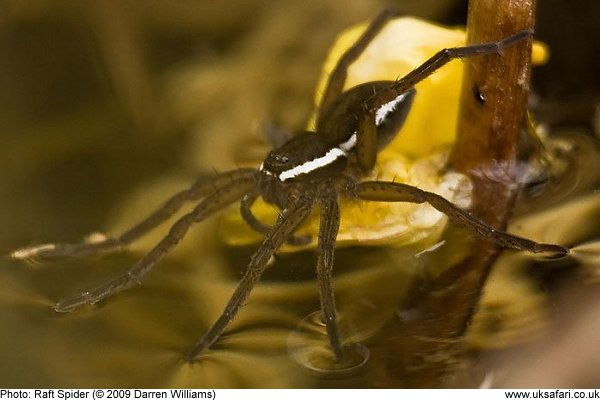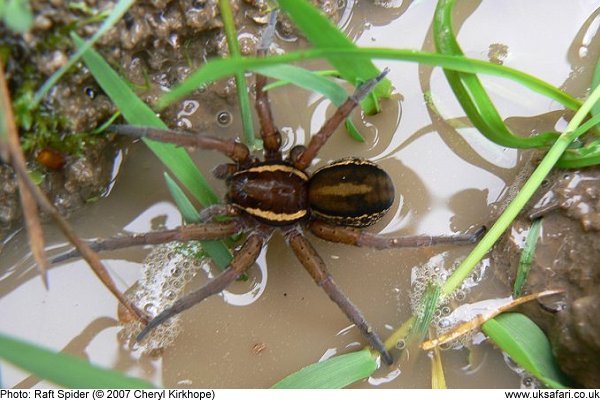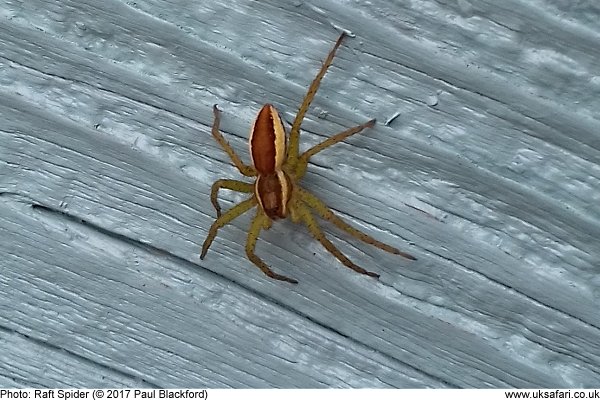 Quick Facts
Quick Facts
Scientific name: Dolomedes fimbriatus
Size: 9mm to 20mm
Distribution: Found throughout the U.K., but locally distributed
Months seen: May to August
Habitat: Boggy woodland, marshes, swamps and ponds
Food: Small invertebrates, tadpoles and small fish
Special features: Sometimes called the Fishing Spider or Fen Spider. The Raft Spider sits at the edge of pools with its front legs resting on the surface of the water. From this position it can detect the vibrations made by any small creatures as they touch the water. Using the surface tension of the water it can run across the surface to catch its prey.
When alarmed the raft spider can dive under the surface of the water and remain submerged for several minutes.
When the young spiderlings first emerge from their nursery tent they spend some time in higher and drier places. They can often be found in trees and bushes. When they are fully grown they move down to hunt on the damp ground and on water.
 Related Pages
Related Pages

 Popular Pages
Popular Pages
Amphibians, Bats, Badgers, Beetles, Birds, Birds of Prey, Bumble Bees, Butterflies, Caterpillars, Creepy-Crawlies, Deadly Spiders, Dolphins, Dragonflies, E-Postcards, False Widow Spiders, Free Newsletter, Frogs, Fungi, Garden Spiders, Glow-Worms, Grey Squirrels, Hedgehogs, House Spiders, Ladybirds, Mammals, Marine Mammals, Moths, Owls, Reptiles, Spiders, Toads, Trees, Wildlife Hospitals
© Copyright 2017 G. Bradley - UK Safari | About Us | Links | Contributors


 Raft Spiders
Raft Spiders




